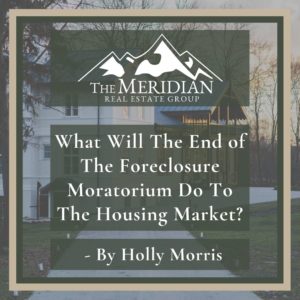 I have been asked several times what I think the landscape of residential real estate will look like as the foreclosure moratorium ends. I always hedge my answer by ending on the note that the truth is no one can say for sure, the crystal ball doesn’t exist even for the most astute real estate professionals or economists. I can however make a somewhat educated guess, partially based on my own experience and memories from the housing crisis of 2008, as well as what I have gleaned from industry experts about our current situation.
I have been asked several times what I think the landscape of residential real estate will look like as the foreclosure moratorium ends. I always hedge my answer by ending on the note that the truth is no one can say for sure, the crystal ball doesn’t exist even for the most astute real estate professionals or economists. I can however make a somewhat educated guess, partially based on my own experience and memories from the housing crisis of 2008, as well as what I have gleaned from industry experts about our current situation.
Working as an onsite sales agent for builders from the 90’s-2007, one visual was constant, bootleg directional signs advertising new home communities. They were everywhere, from major thoroughfares to smaller side streets, and heaviest on the weekends as that’s when communities were the busiest. One time I recall seeing over 20 different communities being advertised on one coveted street corner, pointing potential buyers to their new construction dream home north, south, east and west.
In 2007, I made the move to general real estate and joined Harry Norman Realtors with my husband, Tony. The resale market was robust, a primary indicator being the ever present For Sale sign seen frequently in front yards indicating ample competition and plenty of inventory for buyers to choose from.
So for me the most obvious optic missing this time around is easy to see, or rather not to see. It’s the lack of signage, which points to the lack of inventory, both new and resale.
New home construction is dramatically less than it was decades ago due to various factors, and resale homes remain historically low as Covid and the economic fallout has prompted the majority of potential sellers to wait or even upgrade the home they’re currently in with plans to keep it for many more years.
Yes, we are entering a season where the end of the foreclosure moratorium is about to change the U.S. housing market. But according to housing experts, this time it will like less like a flood and more like a trickle. During the last housing crash in 2008, a frenzy of foolish lending, reckless borrowing, and rampant speculation set up the market for ultimate and devastating failure. Home prices collapsed, and millions lost their homes to banks that should have never loaned many of them money in the first place.
Fast forward decades later to our current situation and credit and lending standards have been much more stringent and the housing market has been very stable in most areas. Instead of millions in default, now the number looks more like in the hundreds of thousands. Plus with rising equity nationwide, many homeowners will be able to sell their homes for a profit as opposed to being foreclosed on.
And this time around, there are buyers who are hungry for inventory. Buyers who are fatigued with being one of multiple offers. Buyers who have been frustrated with bidding wars pushing homes above asking, or worse, appraisal price. Buyers who don’t wish to waive contingency and due diligence periods. Buyers who may be on the verge of giving up if they haven’t already.
So the broad stroke answer to what I think the landscape of residential real estate will look like in the near future is…good. I think homes hitting the market due to the foreclosure moratorium ending will be a good thing.
I look forward to the signs coming back.
By Holly A. Morris, Realtor
The Meridian Real Estate Group
For Additional Blog Content, Click Here!